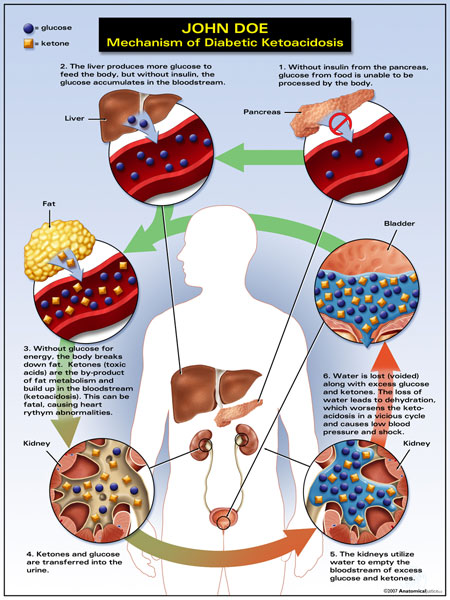We may be familiar about diabetes, but what we may not know are the most common occurrences when one suffers from the abnormality in insulin regulation. Diabetic Ketoacidosis (or more commonly known as DKA) is a complicated, life-threatening condition when the cells within our body system are not fed with glucose (or sugar) which they need in order to have energy. This is due to the lack of insulin hormone which is crucial in converting glucose into energy.

How does DKA happen in our body? As sugar in the form of glucose enters our body system, it should be absorbed by the cells. When a person’s body cells do not accept the glucose, it stays within the blood stream until eliminated from the body through urine. Now, since the cells are not fed of glucose, they get energy through breaking down of fats and muscles. This time, the acid from the fats known as ketones are released into the bloodstream resulting into chemical imbalance which we now know as diabetic ketoacidosis.
How does one develop a condition of lacking insulin hormone? It all starts in the pancreas, the gland that is in charge of insulin production. Once there is a decrease in insulin, gradual ketoacidosis happens.
How do we know the symptoms of DKA? A person developing DKA has the following warnings:
- Hazy vision
- Dry, hot skin that looks flushed
- Regular thirst and urinates a lot
- Tiredness, sleepiness and difficulty in waking up after sleep
- Appetite loss leading to stomach ache and vomiting
- Shallow and rapid breathing pace
- Very apparent fruity smell in breath
- Confusion
How does DKA get treated? Only hospitalization under intense care unit can help the patient stabilize his or her condition. It may take days depending on how the patient copes up with the treatment and insulin intake.
